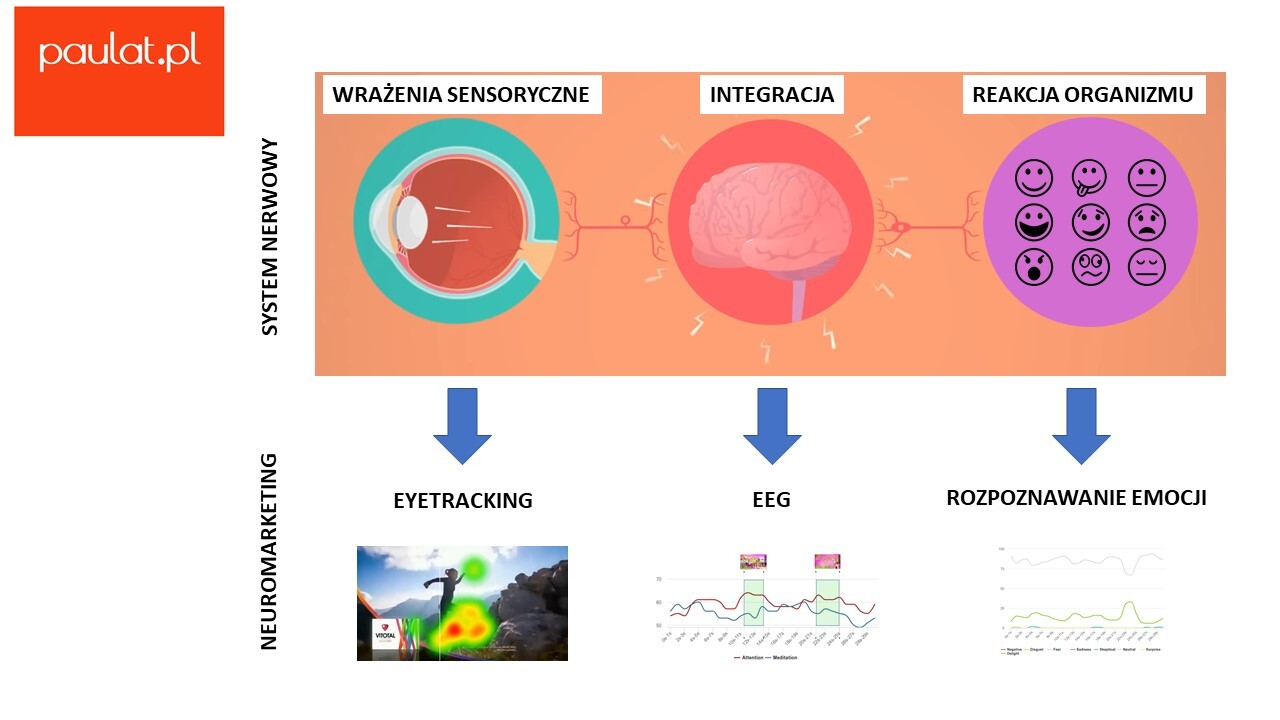Neuromarketing research shows the behavioral reaction of respondents - what do we pay attention to (eyetracking), what emotions accompany it (facetracking) and whether and to what extent we engage the brain in the reception of the message (eeg).Thanks to the study of behavioral reactions of the nervous system, we know what draws the attention of the respondent, what he likes, what increases his concentration. And all of that - before we get answers to questions, opinions and assessments.
Neuromarketing research is effective in marketing communication tests (spots, posters, banners), in packaging tests or in shelf tests, because results better correspond to the human cognitive structure and processes which take place in the nervous system.
Thanks to tracking the movement of the eyeballs, we identify which stimuli have the greatest impact on noticing and attracting visual attention. Sensory impressions are the first element of the process of receiving a message, hence it is important that noticing the most important elements (eg CTA) occurs quickly (in a short time from the beginning of the "exposure"), and the sequence of glances and the length of the eye pull are conducive to stimulating brain activity.
Noticing (e.g. a benefit) does not mean success. In the recipient's nervous system, sensory impressions are delivered to the brain, which integrates and processes information. The brain activity test (eeg) allows to determine the degree of involvement in the reception of the message. Some advertisements are very eye-catching, but they induce relaxation instead of focus, which results in superficial reception of the advertisement and a lower level of remembering the advertisement and its elements.
After the integration of information, the third stage occurs in the nervous system - the body's response. In the research of advertising materials, it will be a grimace reflecting the emotions experienced. In the UX / customer experience test, it will be both a grimace of emotions, a skin-galvanic reaction, as well as finger movement on the screen and selection of a specific option. Techniques that allow decoding emotions from facial expressions are an important element of neuromarketing tests, because they show what emotions accompany the reception of an advertisement, the process of applying for a loan or booking a hotel room.
At PAULAT, we examine the entire reaction process of the nervous system - we identify what attracts visual attention, how it engages and activates the brain's activity, and what emotions accompany the reception of the entire message / process as well as individual elements of the message / process (branding, claim, call to action), construction elements (start-development-end) and functional elements (insight-benefits-authentication).Neuromarketing research clearly shows what the reception of the message is, but it does not answer the question why this is happening. That is why we enrich neuromarketing tests with traditional marketing research - e.g. in-depth interviews.
Contact us to learn more how to optimize your marketing materials.
